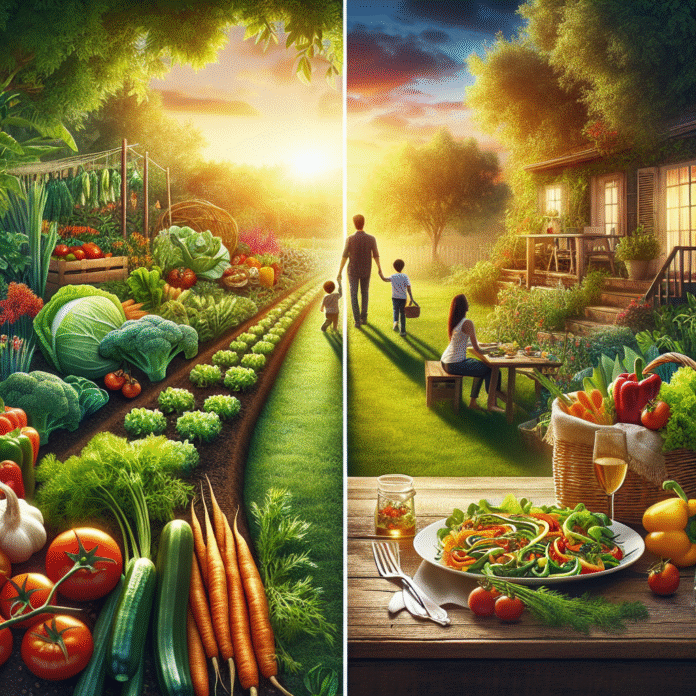In recent years, the movement towards self-sufficiency and sustainable living has gained significant momentum. One of the most fulfilling ways to embrace this lifestyle is by growing your own vegetables. Not only does home gardening provide fresh produce at your fingertips, but it also fosters a connection to nature and promotes healthy eating. Whether you have a sprawling backyard or a tiny balcony, cultivating your own veggies can be both easy and rewarding. Here’s how to get started on your garden-to-plate journey.
Getting Started: Choosing the Right Location
Before you plant your first seed, assessing the right location is crucial. Vegetables generally need:
- Sunlight: Most vegetables require at least 6-8 hours of direct sunlight daily. South-facing areas are often ideal.
- Accessibility: Ensure your garden is easy to reach for watering, harvesting, and maintenance.
- Soil Quality: Well-draining soil rich in organic matter is essential. Testing your soil pH can be helpful, and adjusting it with organic compost can improve its fertility.
Selecting the Right Vegetables
When starting your garden, choosing the right vegetables can set you up for success. Consider the following factors:
- Climate: Certain vegetables thrive in specific climates. Research what grows best in your area.
- Space: Some crops, like tomatoes and cucumbers, require more space, while others, like radishes and lettuce, can grow in smaller areas.
- Personal Preference: Grow what you love to eat! Starting with a few of your favorites will keep you motivated.
Beginner-Friendly Options:
- Lettuce
- Radishes
- Carrots
- Herbs (basil, parsley, cilantro)
- Tomatoes
Planting: The Basics
Once you have selected your vegetables, it’s time to plant. Here’s a simple guide:
- Soil Preparation: Mix in organic compost to enrich the soil.
- Seed or Seedling: Decide if you want to start from seeds or small plants. Seeds can be less expensive and offer more variety, while seedlings can provide quicker results.
- Spacing: Follow the seed packet or plant label for recommended spacing to ensure proper growth.
- Watering: Water the area well after planting and keep the soil consistently moist but not waterlogged. A soaker hose or drip irrigation can be effective methods to maintain moisture.
Caring for Your Garden
Once your vegetables begin to sprout, nurturing them becomes essential:
- Watering: Regular watering is crucial, especially during dry spells. Early morning is the best time to water to minimize evaporation.
- Weeding: Remove weeds that compete for nutrients and water. Mulching can help suppress weeds and retain moisture.
- Fertilizing: Consider using organic fertilizers to provide additional nutrients throughout the growing season.
Pest and Disease Management
Keeping a watchful eye for pests and diseases is key to a thriving vegetable garden:
- Natural Remedies: Introduce beneficial insects like ladybugs or use homemade sprays with ingredients like soap and water or garlic.
- Crop Rotation: Changing the location of your crops each year can help prevent disease and nutrient depletion.
Harvesting: Enjoying the Fruits of Your Labor
The final step in your journey from garden to plate is harvesting. Knowing when to pick your vegetables is crucial for optimal flavor and freshness:
- Timing: Harvesting at the right time ensures maximum taste. For instance, tomatoes should be picked when fully ripe, while beans are best harvested young and tender.
- Technique: Use a sharp knife or scissors to cut vegetables carefully to avoid damaging the plant, encouraging further growth.
From Plate to Table: Cooking with Fresh Ingredients
Now that you’ve grown your vegetables, the fun doesn’t stop there! Enjoying your produce fresh from the garden can inspire a variety of delicious meals. Here are a few simple cooking ideas:
- Salads: Use fresh lettuce, tomatoes, and cucumbers for a vibrant, healthy salad.
- Stir-Fries: A mix of veggies like bell peppers, carrots, and green beans can create a quick, nutritious stir-fry.
- Herbs: Fresh herbs can elevate any dish. Add them to sauces, marinades, or as a garnish.
Conclusion
Growing your own vegetables is a rewarding venture that can lead to healthier eating and a deeper appreciation for where your food comes from. With a little planning, a bit of patience, and some care, you can transform your outdoor space (or balcony) into a flourishing garden. So, roll up your sleeves and get started — your plate awaits!






